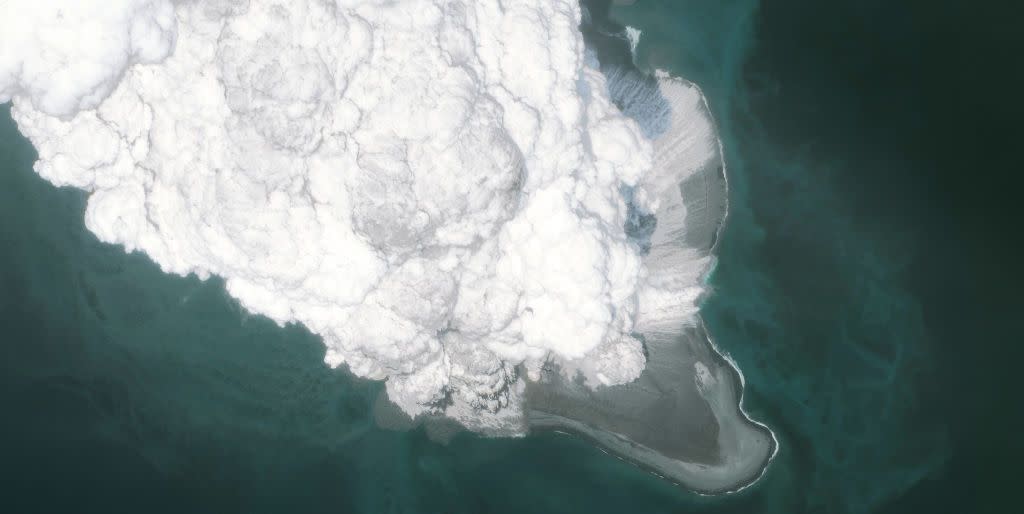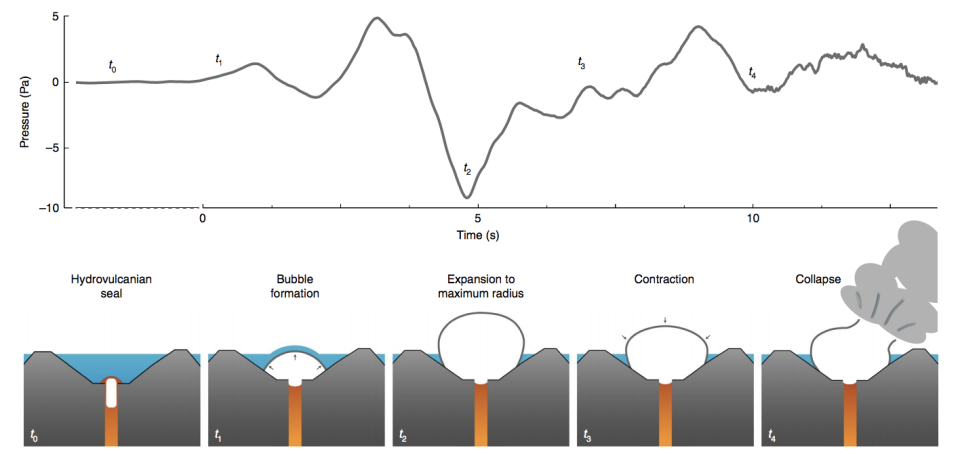This Underwater Volcano Belched Gas Bubbles Larger Than a Football Stadium

In 2016, Bogoslof volcano, an underwater vent in the Aleutian Islands, burped out massive bubbles of volcanic gases spanning hundreds of feet wide.
Researchers gathered evidence that these gas bubbles surge up to the surface using low-frequency microphones positioned almost 60 miles away.
These findings, reported in Nature Geoscience, shed light on the volcanic processes that drive these massive gas bubbles.
In late 2017, a remote stretch of water in the Bering Sea turned into a bubbling cauldron. A remote volcano, called Bogoslof, whose vent sits roughly 350 feet below the surface, came to life. The eruption formed a ring of steaming volcanic rock in the remote region of the Bering Sea. At the time, scientists were stunned.
Now, new research reported this week in Nature Geoscience has provided insight into the volcanic processes that took shape over the course of a nine-month period during which the volcano erupted more than 70 times. A series of microphones stationed 59 miles away picked up low-frequency, or infrasound data, that revealed that each eruption was preceded by a strange, seconds-long rumbling sound.
Scientists concluded that the gurgling sounds indicated the formation of a massive, gurgling gas bubble—larger, in some cases, than the world's largest sports stadiums—that swelled above the vent and eventually burst at the ocean’s surface. To confirm their theory, they compared the recordings to sounds created by a computer model that replicated the bubbles’ formation.
But how do these massive air bubbles form?
Recently erupted and rapidly chilled lava creates a thin dome over the top of the volcano’s vent. Beneath that thin layer of rock, a massive gas bubble filled with water vapor, carbon dioxide and sulfur dioxide forms, pushing up on its rocky lid. It expands and contracts as more gas is pumped in and seawater pushes back against it. Eventually, the pressure of the water above collapses the cap, sending gas and rock shooting toward the surface and miles into the air.

This isn’t the first time we’ve witnessed such a massive bubble. In 1908, as Wired reports, a ship called the Albatross was sailing through the Aleutians, when it came across a large dome of water that bulged out of the sea and quickly erupted in a brilliant show of ash and rock.
Scientists have long pondered the existence and circumstances of these volcanic bubbles, but haven’t been able to get a close look. Thanks to the development of high-quality infrasound recorders that are able to capture these low frequency rumbles, we’re able to better understand how these shallow underwater volcanoes erupt.
Source: Science
You Might Also Like

